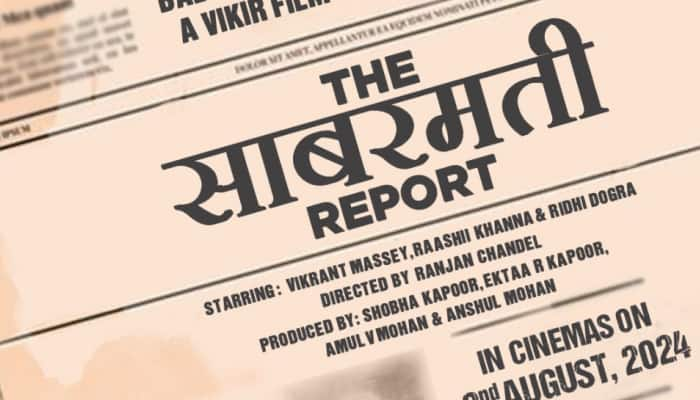Adi Shankara, his life & Mutts
In the Bhagavad Geeta, Lord Krishna tells Arjuna that whenever there arises danger to Dharma, He (Krishna) will incarnate to eradicate adharma and re-establish righteousness. People believe that Adi Shankara—believed to be an incarnation of Lord Siva- appeared on earth to propagate the ancient Vedic Dharma in the form of Advaita or the philosophy of non-duality, when the practice of Dharma was on the decline.
Trending Photos
)
Arun Chaubey
In the Bhagavad Geeta, Lord Krishna tells Arjuna that whenever there arises danger to Dharma, He (Krishna) will incarnate to eradicate adharma and re-establish righteousness. People believe that Adi Shankara—believed to be an incarnation of Lord Siva- appeared on earth to propagate the ancient Vedic Dharma in the form of Advaita or the philosophy of non-duality, when the practice of Dharma was on the decline.
Shankara’s father died when he was five years old. Soon after, he joined a nearby Gurukula on the banks of River Poorna and completed his studies in the next eight years. He left home promising his mother to come to tend her in the last part of her life.
Visiting many pilgrim centres, in Kashi (Varanasi), he experienced the Advaita doctrine, surprisingly through a pariah.Shankara wrote many philosophical treatises to establish the concept of Advaita, with commentaries on Brahma Sutras, Srimad Bhagavad Gita, Ten principal Upanishads and a few other works and poems in praise of various Vedic deities.
He left commentaries on the trilogy of Vedantic scriptures, i.e., major Upanishads (about ten in number, including " Brihadaranyak Upanishad ", "Chandogya Upanishad" and "Mandukya Upanishads"), "Brahma Sutra", and "Bhagavad Gita". He is also said to have written, among others, "Vivekachudamani (Discrimination of Jewel)", where he fully expounded Vedantic principles, and "Atmabodha (Self-Knowledge)", where he exclusively discusses the identity between Atman and Brahman. A sub-commentary on the "Commentary by Vyasa on Patanjali`s Yoga Sutras" is also attributed to him.
Shankara during his conquests defeated several Acharyas across length and breadth of the country: among them were Mandana Mishra and his wife of Ubhaya Bharat in Mahishmati and Ugra Bhairava--a notorious in Tantric field, in Srishalila. Reaching the banks of River Narmada, he met Govinda Bhagavatpada--a Mahayogi, and accepted him as his Guru.
He also paid a visit to Sharada Nilaya in Kashmir known as Sarvajna Peetha (the seat of the all knowing). Scholars in religious philosophies of Jainism, Buddhism, Samkhya, Yoga, Nyaya and Vaisheshika confronted him, all of whom he defeated in debate before entering through the Southern gate, a privilege reserved for someone superior to the sect heads.
In Shankara’s view the entire Bharat was a holy land, therefore its welfare and unification was to be based on Dharma only. He established four centres in four corners of India for spreading Vedanta. At Shringeri--situated on the bank of River Tunga in Karnataka, he established the first Vedanta Jnana Peetha and installed the idol of Sri Sharada (Goddess of Learning) placing Sureshwara as the head of the Peetha. He also established Govardhana Peetha in Jagannath in the East, the Kalika Peetha in Dwaraka in the West, and the Jyotir Peetha in Badarikashrama in the North. These Peethas are called ‘Amnaya Peethas.’
In Kashi too there is a Shankara Math, known as Sumeru Math and as Paduka Math, presided over by an Advaita Dandi Sanyasi. It is said that Shankara completed his mission in 820 AD and passed away at the age of merely 32 years in the mountainous region of Kedarnath.
It cannot be said definitely where the Acharya spent his last days. People claim the signs of Shankara’s Mahasamadhi in the holy towns of Kanchi, Trichur and Kedar. If his samadhi is in Kedar, it only signifies that his personality had extended over the whole of Bharat.
Kanchi connection
Though Shankara is attributed to have remodeled Kanchi city and got reconstructed three principal temples there with the assistance of Rajasena, ruler of Kanchi., the other four Mutts established by Shankara do not recognise the Kanchi Peeth. Even the Supreme Court in its directive in Swami Parmatmanand Vs Ramji said, “Adi Shankarachaya established only four Mutts.”
On the contrary, Kanchi Peeth claims that Shanakara established the fifth Peeth here and gave it upper hand over the four others. It also propagates that Shankara even died at Kanchi not at Kedarnath, besides establishing Sarvarga Peeth at Kanchi and not at Kashmir.In 1940s renowned scholar Sir C P Ramaswami Aiyyar wrote that there is nothing like Kanchi Kamkoti Peetham. It is believed that one branch of Shringeri was established in Kumbhakonam, where a seal (originally in Kannada) was discovered describing it as the Sharada Mutt. Goddess Sharada was worshipped only in Shringeri, while Goddess Kamakshi was venerated at Kanchi showing that Kumbhakonam Mutt did not come from Kanchipuram.
With passage of time, the Kumbhakonam Mutt declared independence from Shringeri. Some enthusiasts at Kumbhakonam even propagated a theory that Adi Shankaracharya was born in 477 B.C. They also prepared a list of Mathadhishas as per which Jayendra Saraswati is the 69th Shankaracharya.
However as per records, the head of Kumbhakonam in 1839 sought permission for the Kumbhashikam of Kamakshi temple in Kanchi from the then British Collector. In 1842, the East India Company had appointed the then head of Kumbhakonam as the lone trusty of Kamakshi temple. Thus the history Kanchi Mutt as an institution goes back to only 1842.
The credit for bringing prominence to the Kanchi Mutt goes to late Chandrashekharendra Saraswati. Prior to him, the headquarters was in Kumbhakonam and the seers used to visit Kanchi to express their authority over Kamakshi temple from time to time.
Other Shankara Mutts & controversies
Besides Kanchi Peeth, there are four other Shankara Mutts. Shankar Mutt at Dwarka, also known as Sharada Peeth, is presently headed by Acharya Swami Swarupanand, but he also claims the headship of two more Peeths. Besides him, there are three more names, that of Swami Vasudevanand, Swami Madhwashrya and Swami Madhwanand. Of these, one lives at Varanasi, another at Haridwar but the third one at Delhi has been acknowledged by the Vishwa Hindi Parishad as the Shankaracharya.
Among the most controversial Mutts is the Badrinath, where once Mahesh Yogi put forth his claim of becoming Shakaracharya, but had to withdraw as he was not a Brahmin. The belief is that after 1780s, there was no Sanyasi Shankaracharya for the Jyoti Mutt or Badrikashram, as the priests used to look after the responsibility of the Peeth. In 1941, Swami Brahamanand Saraswati again started the practice and himself became the Shankarachraya.
The Bharat Dharma Mahamandal in Varanasi anointed him as the Shankaracharya. He tried to revitalize the Mutt, which prospered under his tutelage, but after his death in 1953, the system was once again disturbed. Among his four disciples—Swami Karpatri, Swami Krishna Bodhshrya, Swami Swarupanand and Dwarka Prasad—Karpatri left his claim, but among the other three the dispute is still believed to be sub-judice.
At Puri Peeth, Acharya Swami Niranjandev Tirth chose Swami Nischalanand Saraswati as his heir. But when the latter took over as Shankarcharya of the Peeth, one 16-year-old Sanyasi Swami Adhthtjanand put forth his claim. Scholars did not take him seriously, but nobody challenged him either. Besides, there are two more claimants—one Swami Rameshwaranand in Varanasi and another is Govindanand.
In order to sort out the dispute at Badrinath, Dwarka’s Shankaracharya Swami Abhinav Sachidanand Tirth took initiative and appointed Swami Swarupanand as his heir expecting that the latter would leave his claim over Badrinath. But after his death Swami Swarupanand took over the charge of Dwarka Peeth, but continued to be the Acharya of Badrinath. Thus accession to this Peeth too is still mired in controversy.
Though there is no dispute at Shringeri Peeth, due to its orthodox practices it has always been in discussion.
(July 18 was Guru Purnima)
| Related Stories | ||
|
||
Stay informed on all the latest news, real-time breaking news updates, and follow all the important headlines in india news and world News on Zee News.
Advertisement
Live Tv
Advertisement







)
)
)
)
)
)
)
)
)
)
